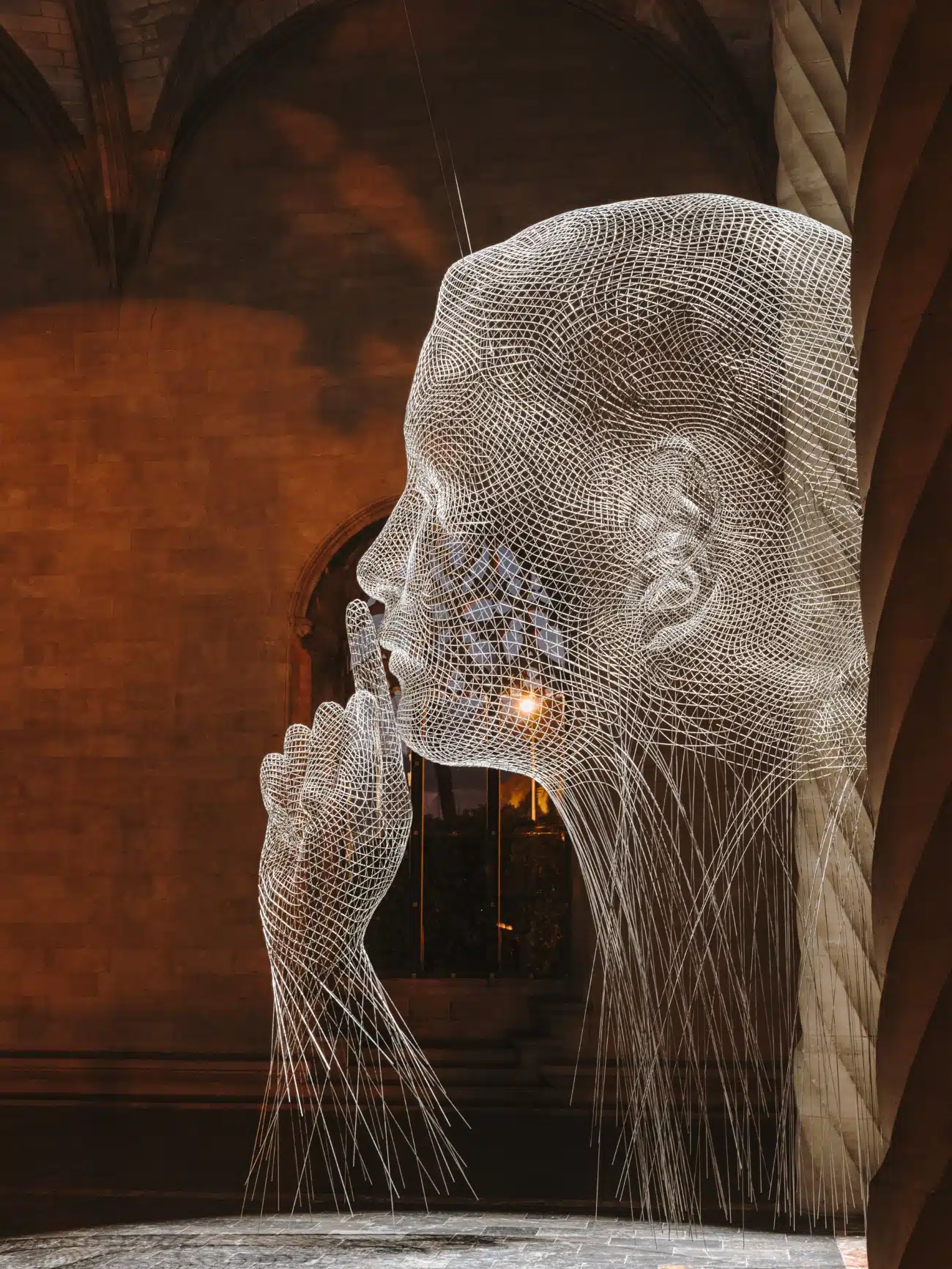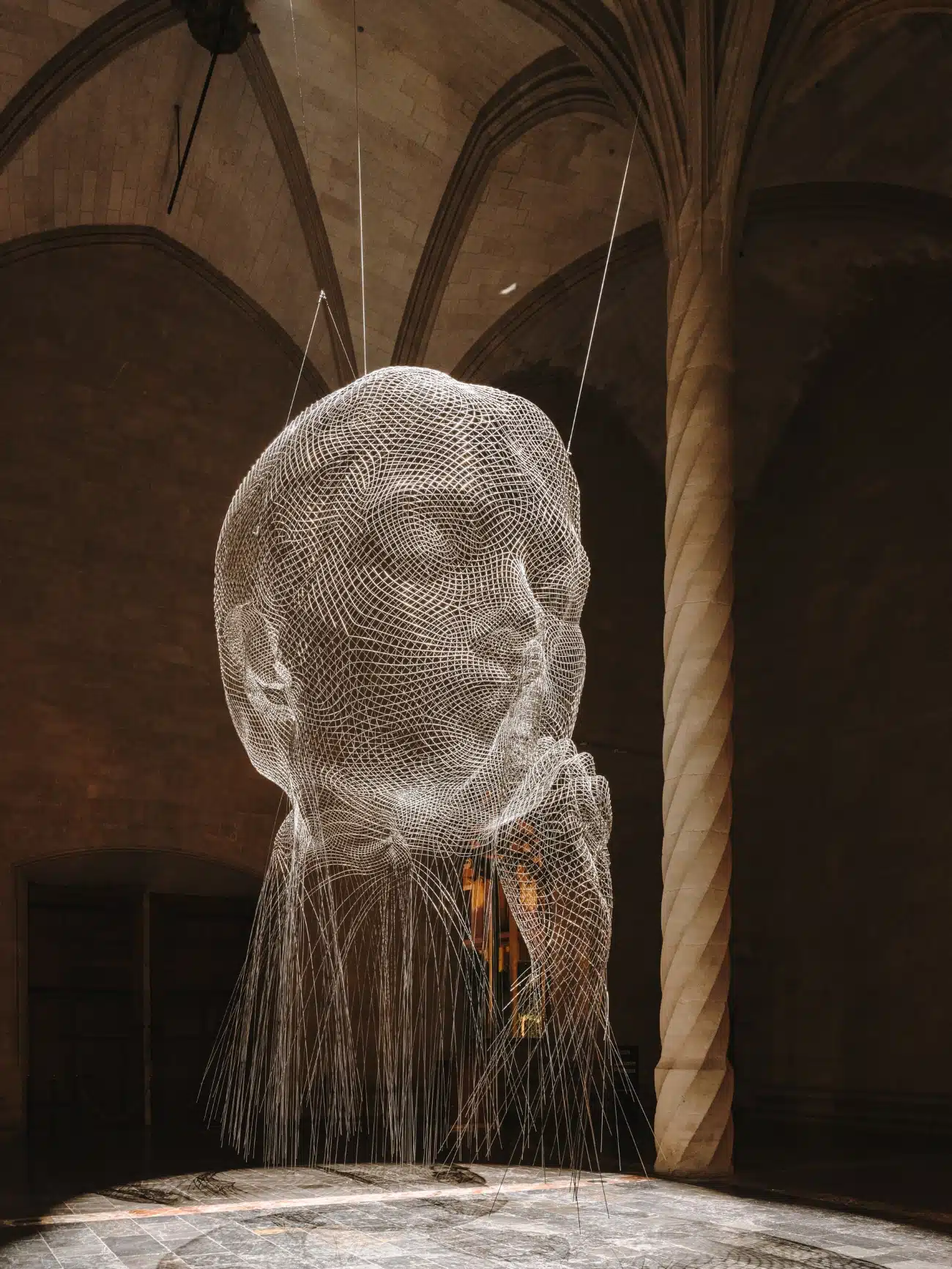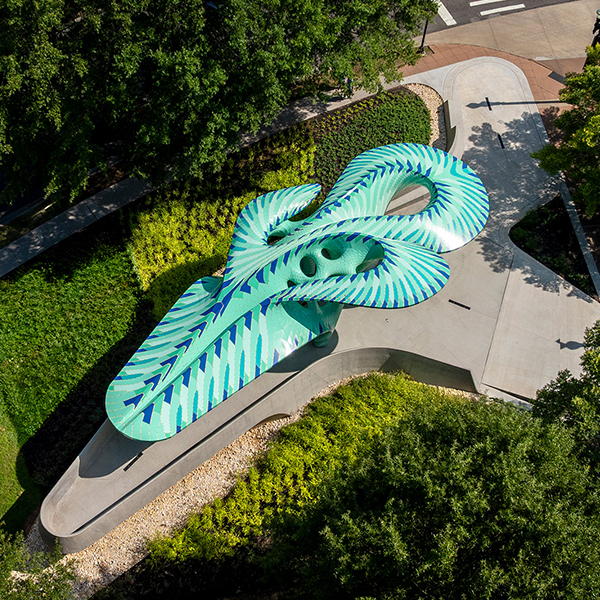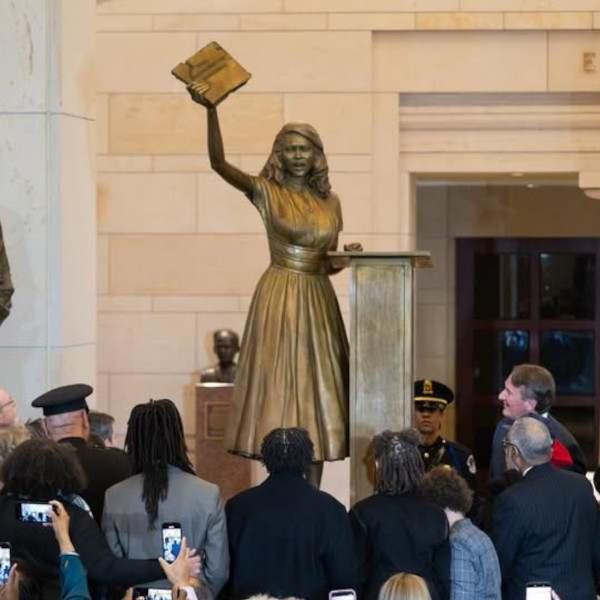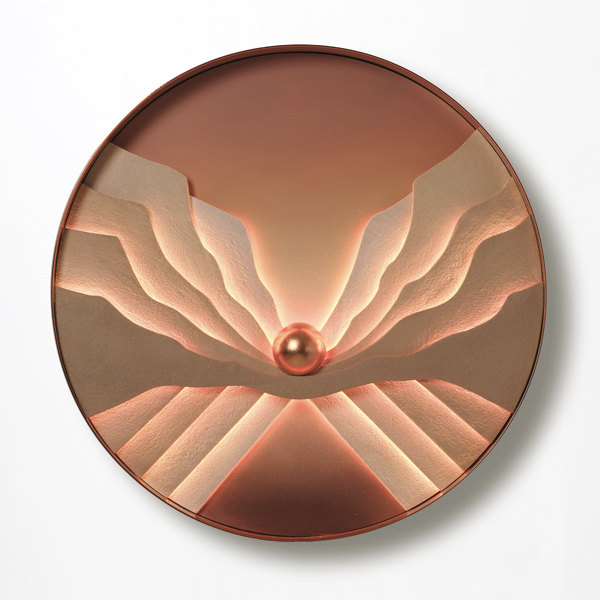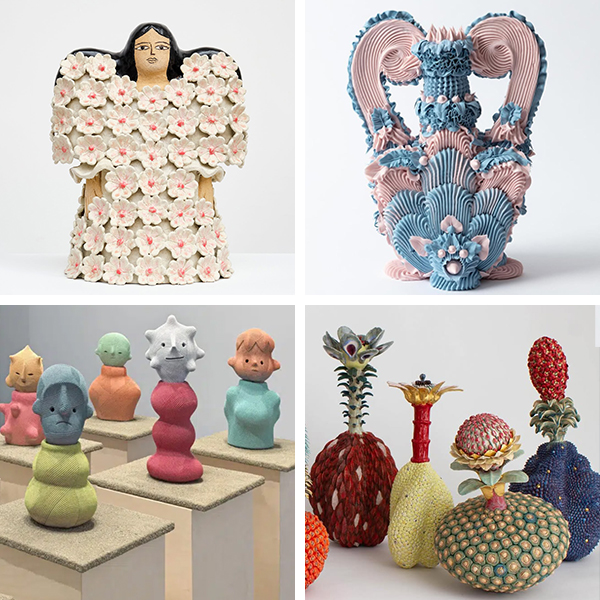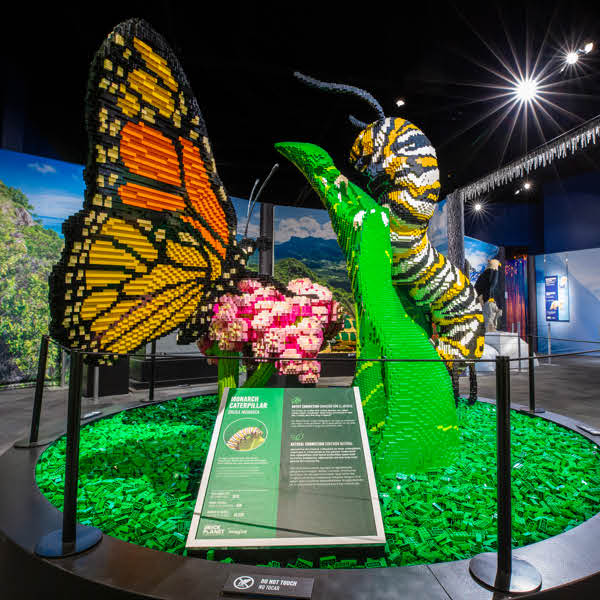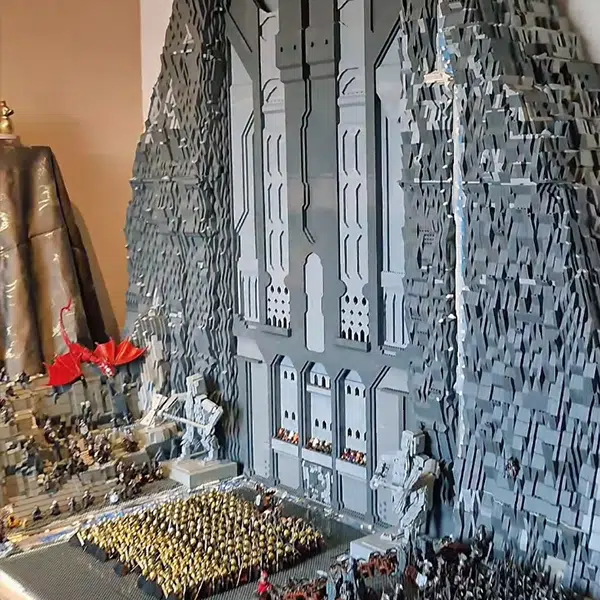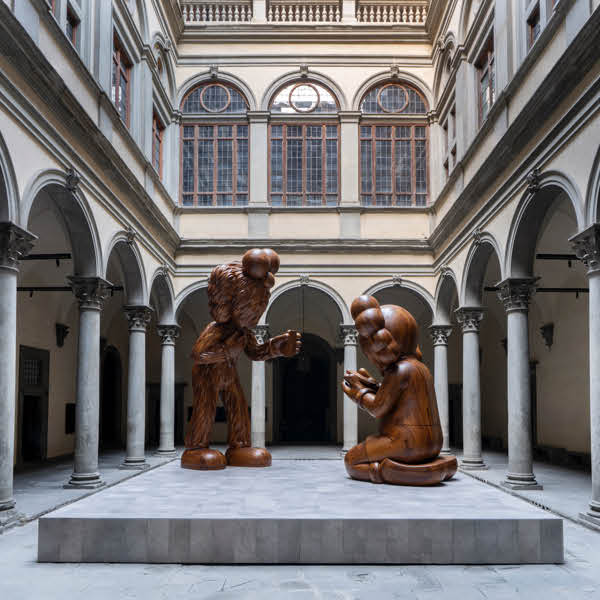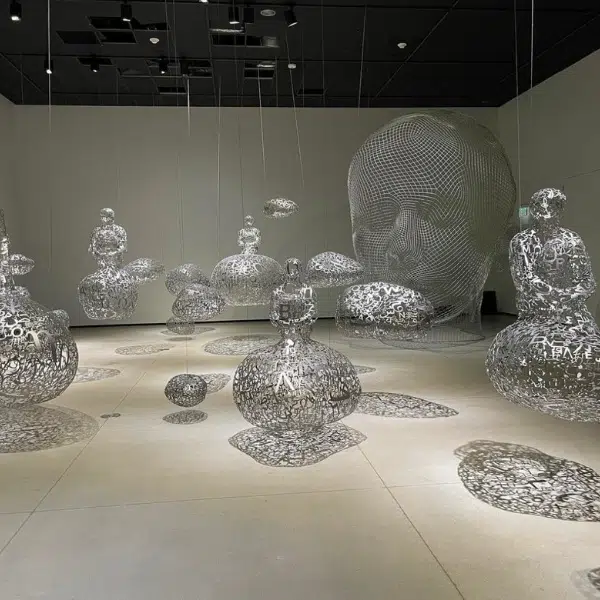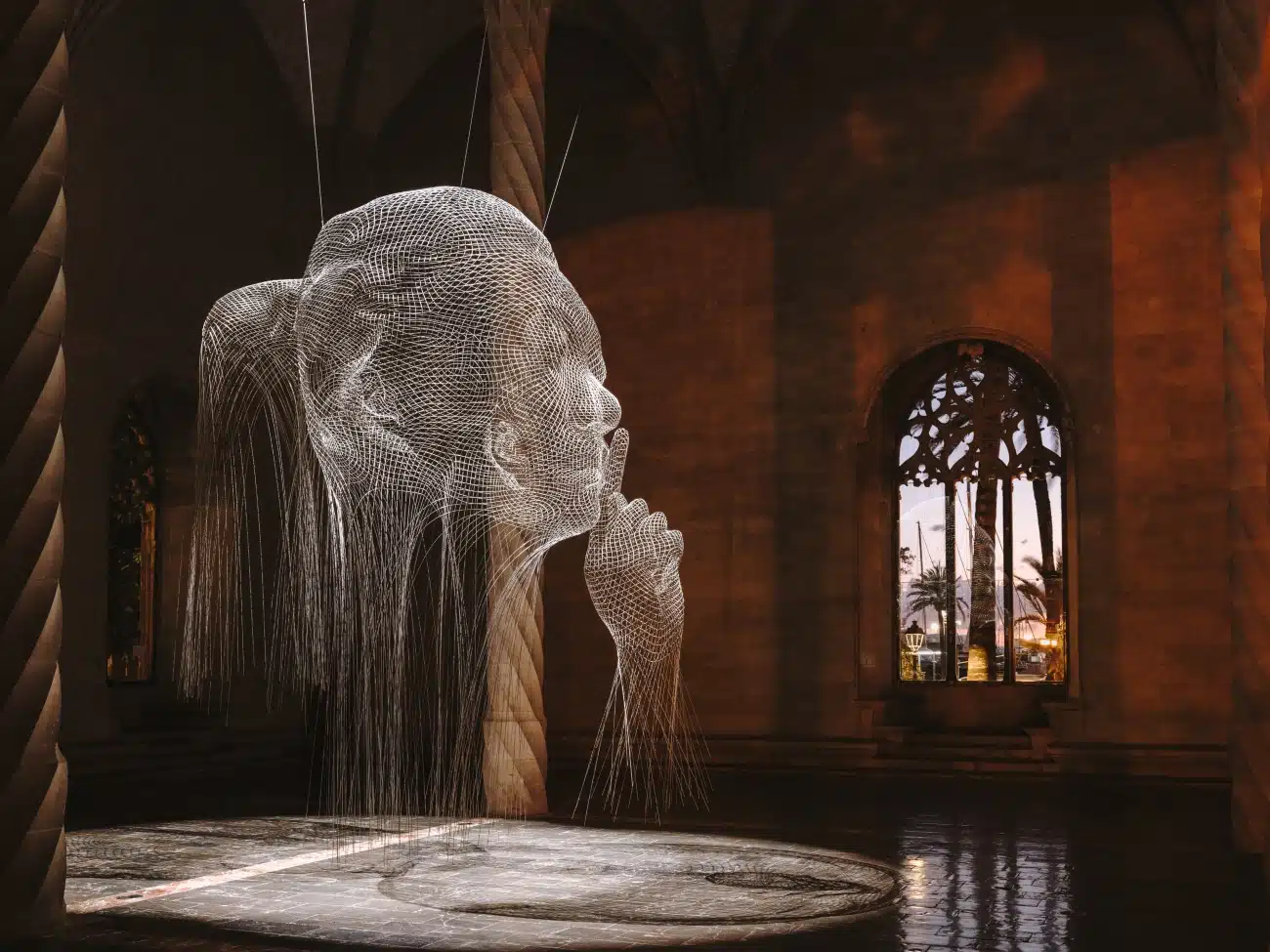
Spanish artist Jaume Plensa has brought his monumental sculptures inside one of Palma de Mallorca's most historic buildings. The 15th-century La Llotja is now home to Plensa's Mirall (meaning “mirror” in Catalan), an exhibition that reflects on the dualities of the world. In it, two 23-foot-tall stainless steel sculptures have been erected under its vaulted ceiling, blending the contemporary with this fine example of Catalan Gothic architecture.
The sculptures, titled Invisible Laura and Invisibile Rui Rui, face each other with their backs to the main door. Each holds a finger to their lips, signaling for silence. The stainless steel mesh used in the sculptures gives them a ghostly appearance. Though decidedly part of the space, they are also easily penetrated by their surroundings. We see them, but we also see through them in a way that plays into Plensa's concept of duality.
“This is a project with which I reflect on the dualities of the world,” the artist shares. “Janus was one of the main gods in ancient Roman religion. He was a divinity with two faces: one looking to the past and the other to the future. The reflection of our face in the mirror, in the faces of others, lovers and friends, strangers and acquaintances.
“Men and women sharing their faces in the most generous of our acts. The duality of body and shadow, of day and night, of joy and pain… The duality of all our dreams still waiting to materialize in the reflection of a mirror.”
Plensa's musings on duality are appropriate to the space. La Llotja was built as the headquarters of the Merchant's Association and was also used as a fish market. More recently, it has been home to contemporary exhibitions, with Plensa being the third artist to show his work there since 2023. As this historic monument embraces its new role in contemporary art, it bridges the old and the new.
Mirall will remain on view at Palma de Mallorca's La Llotja until February 15, 2025.
Spanish artist Jaume Plensa brings his monumental sculptures inside one of Palma de Mallorca's most historic buildings.
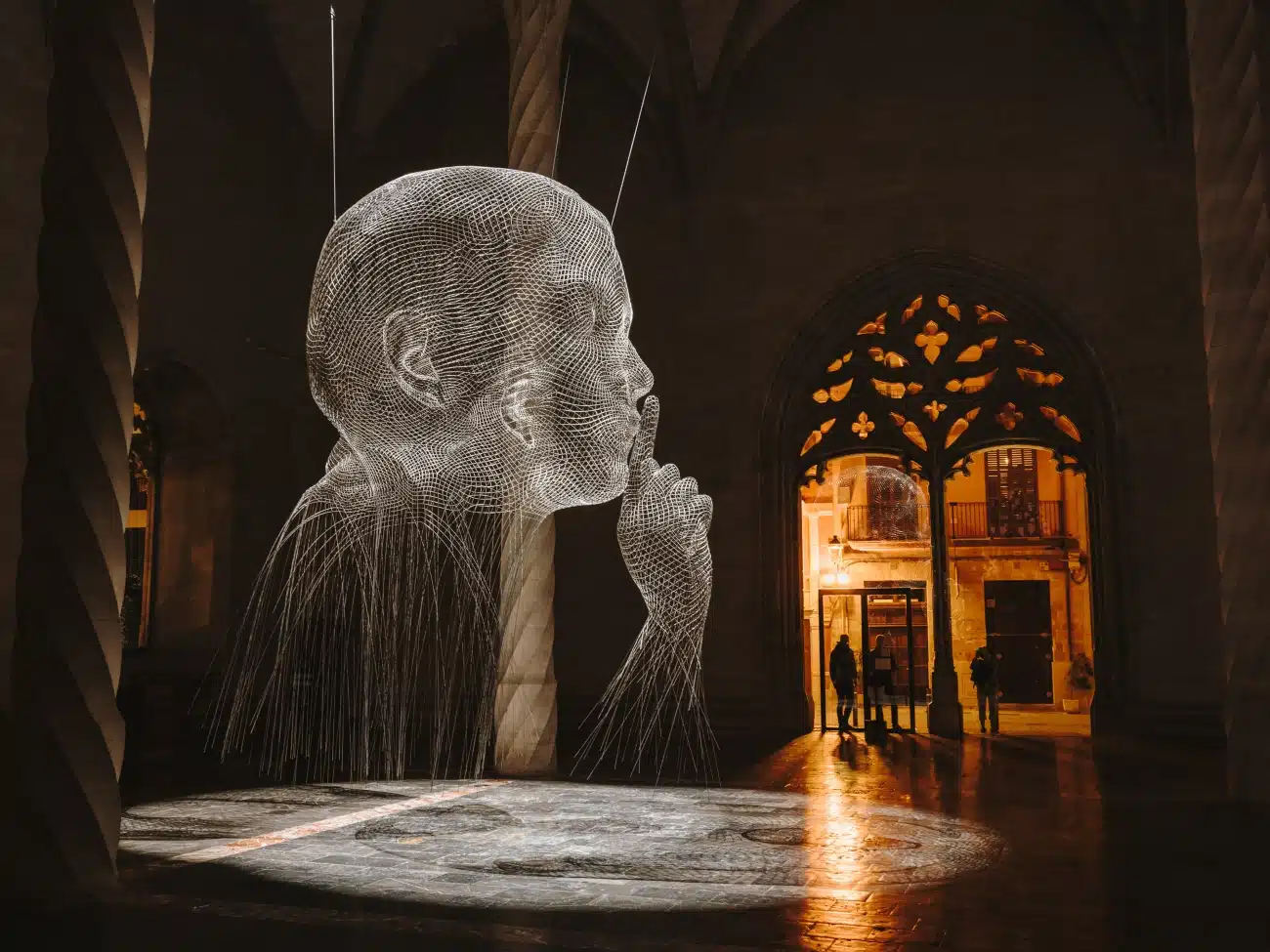
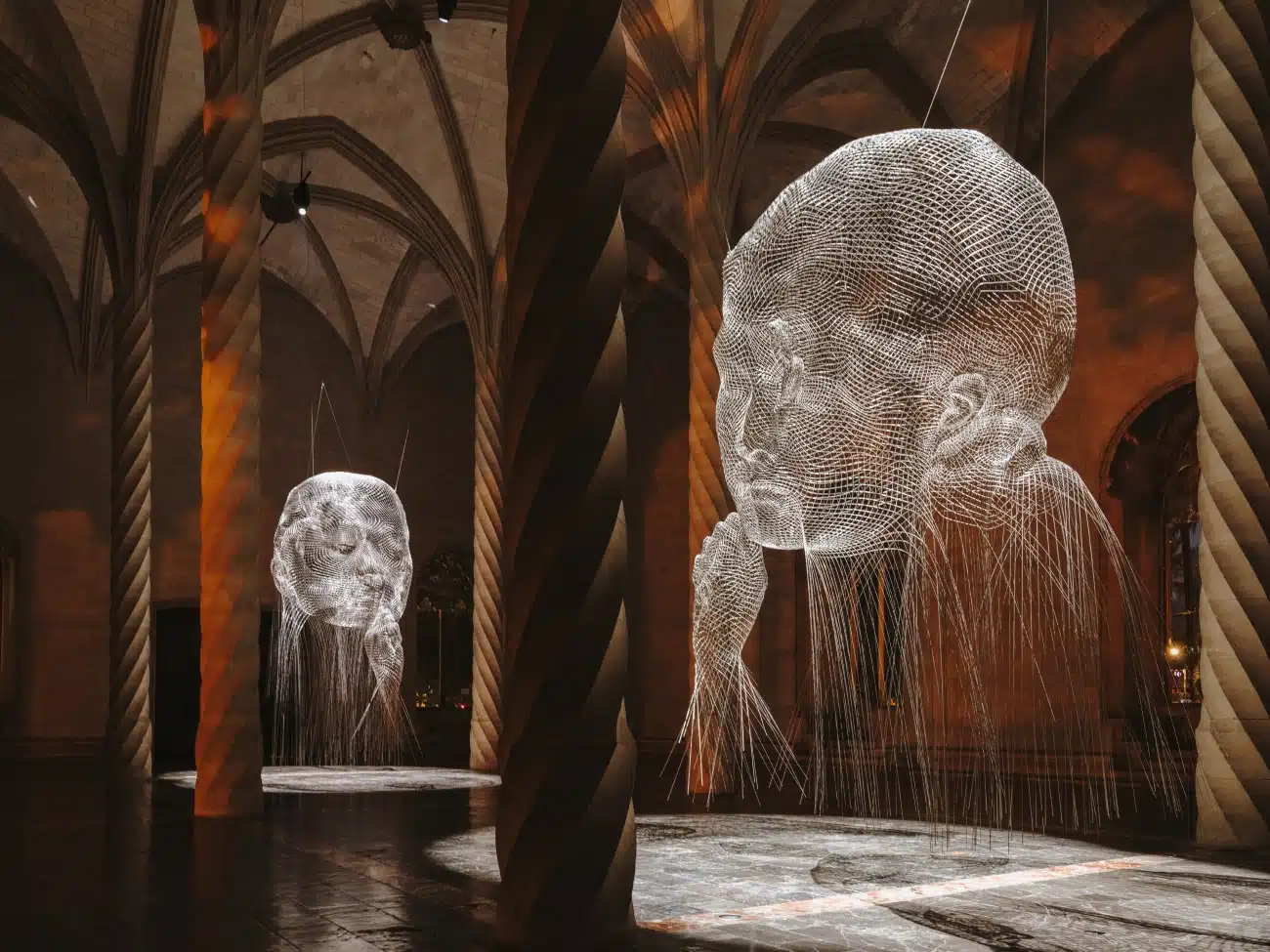
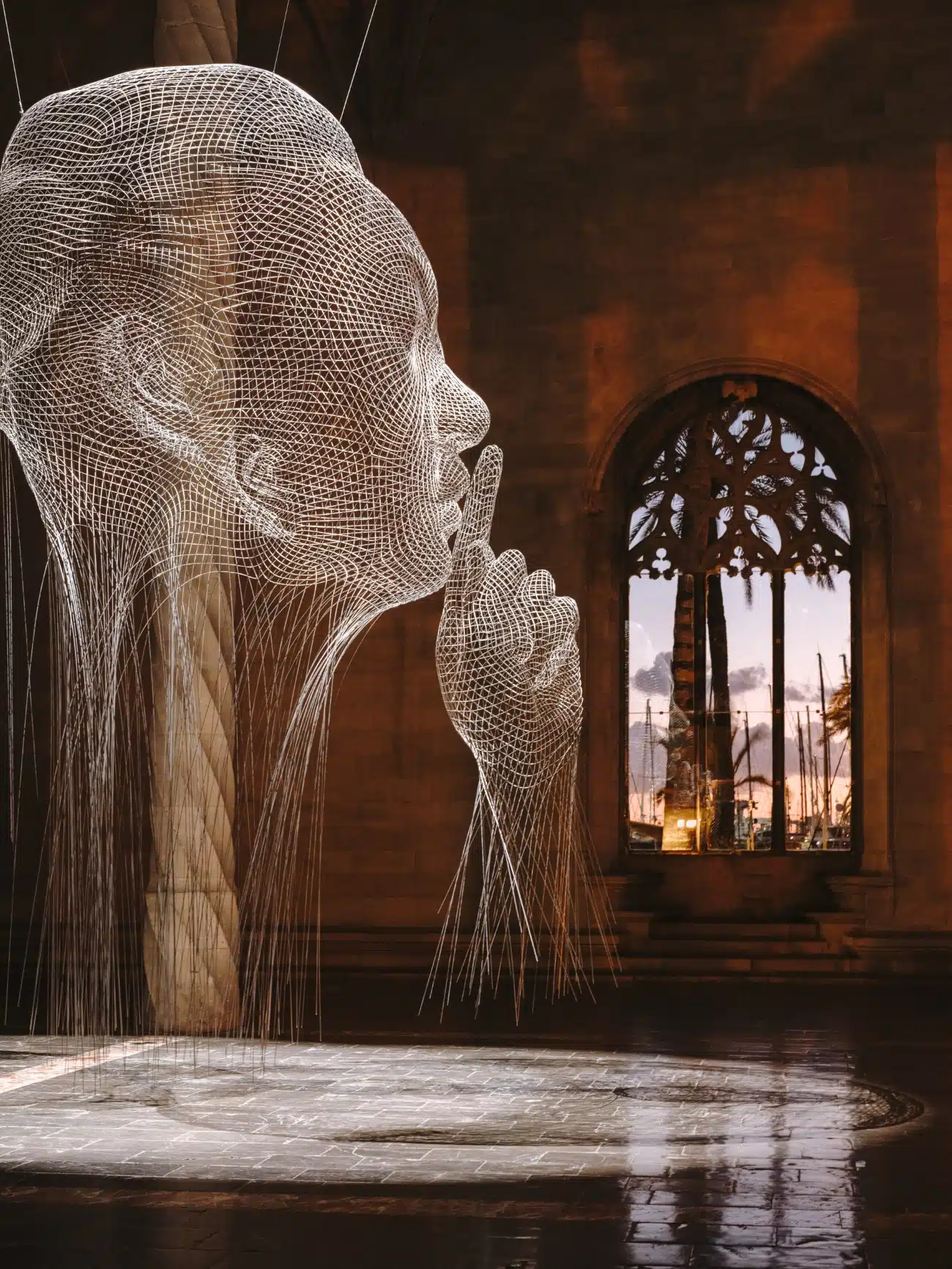
Mirall is staged inside the 15th-century La Llotja, a fine example of Catalan Gothic architecture.
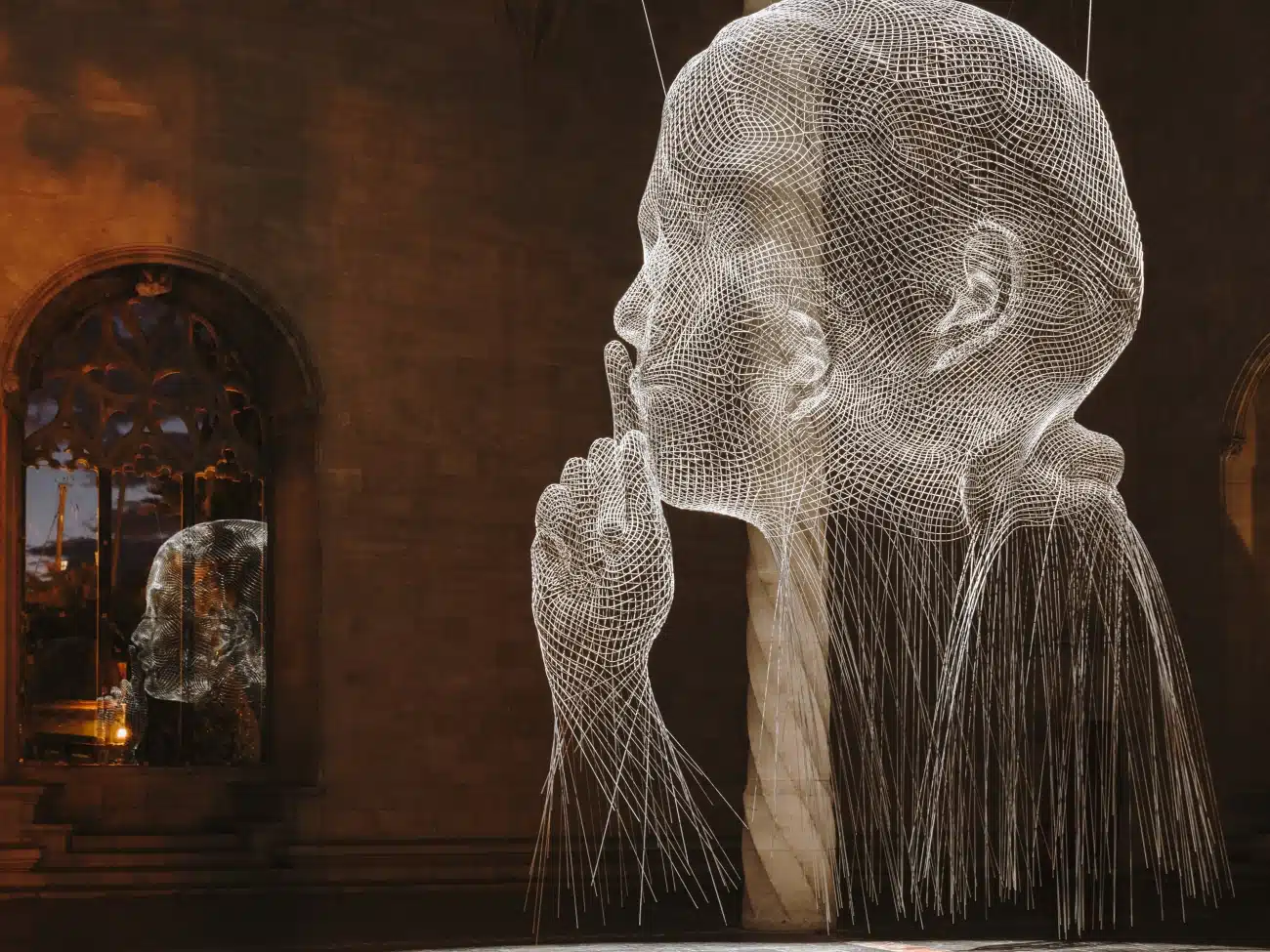
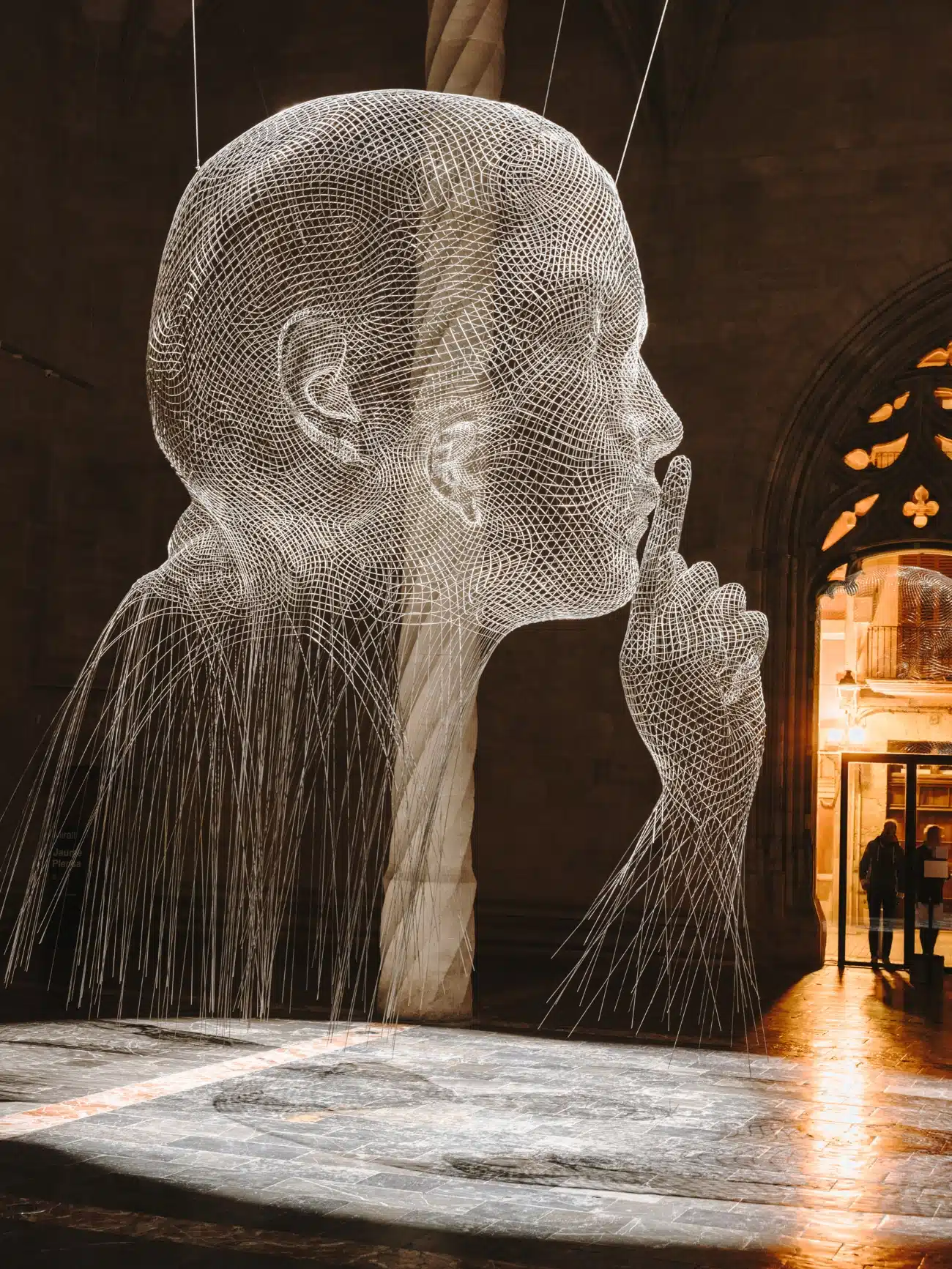
Two 23-foot-tall stainless steel sculptures have been erected under its vaulted ceiling and sit facing each other.
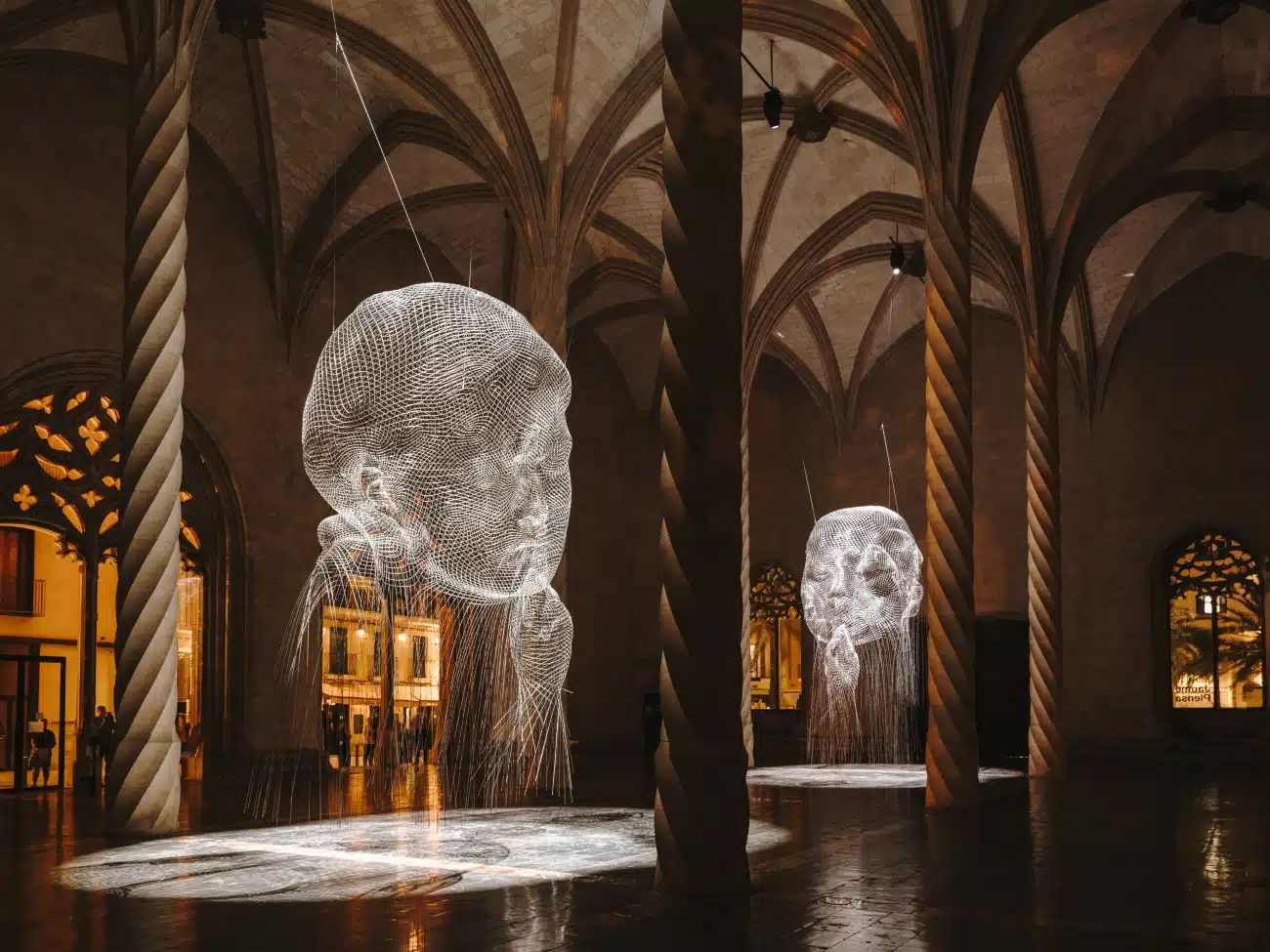
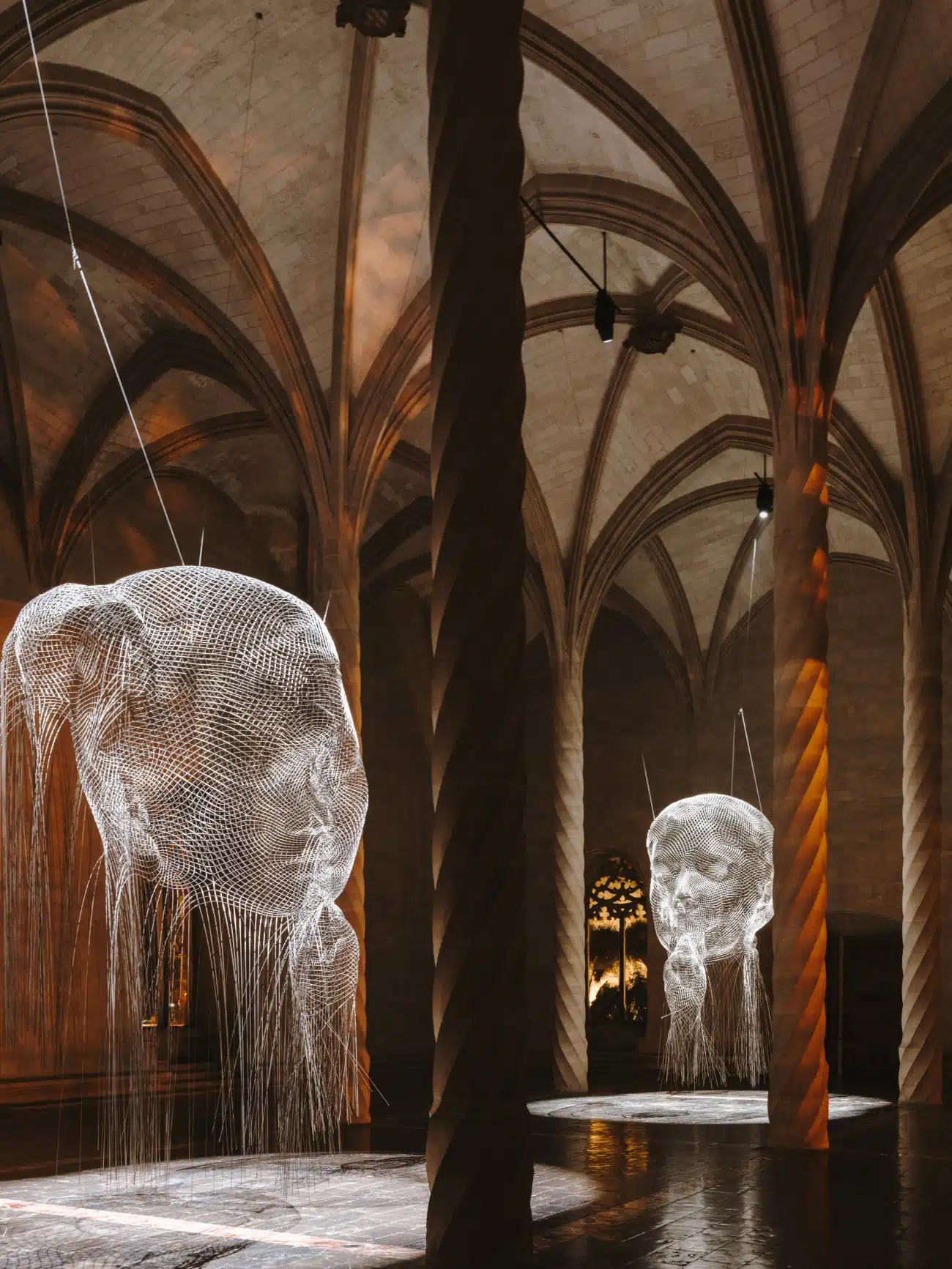
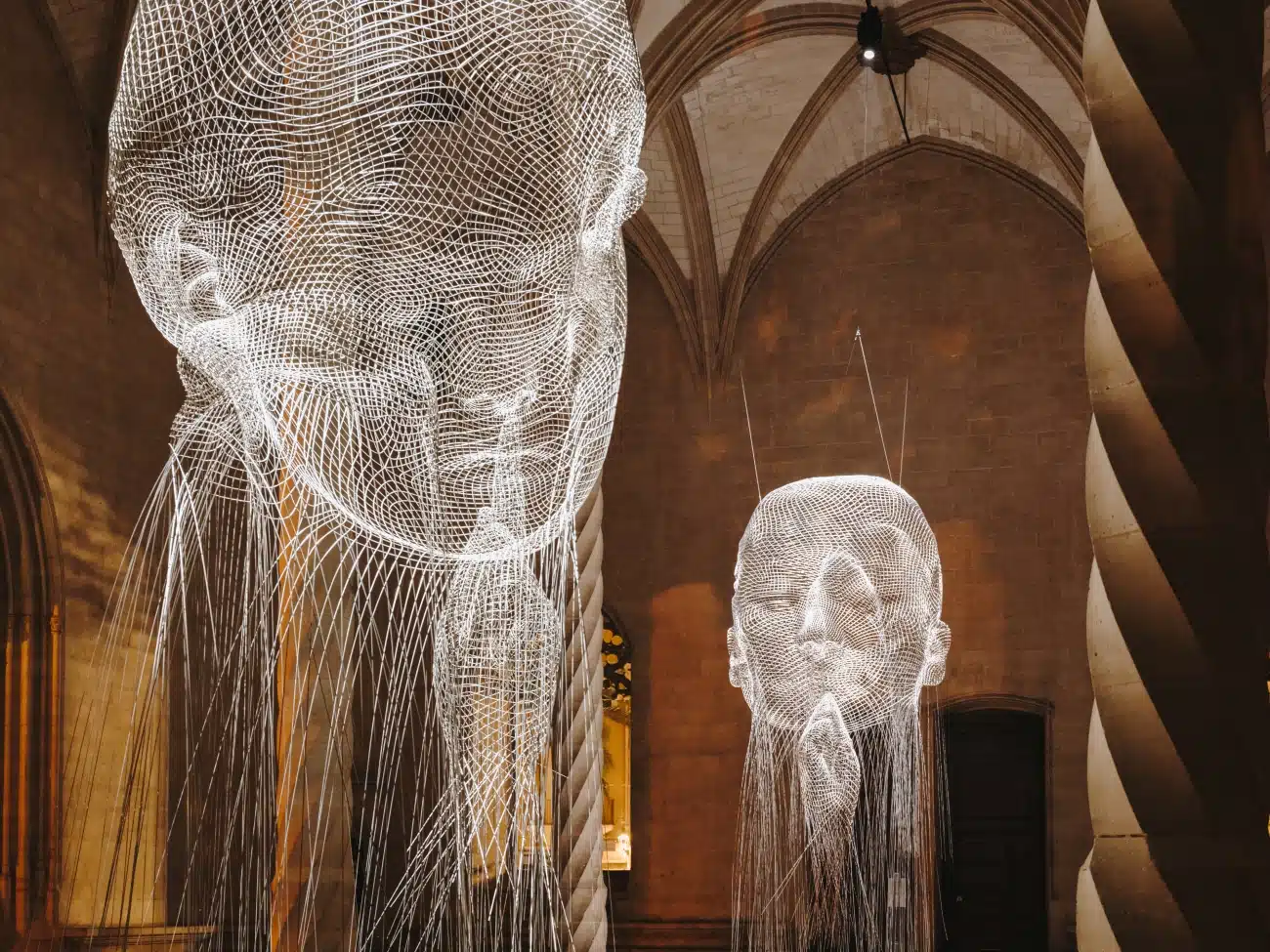
“This is a project with which I reflect on the dualities of the world,” shares the artist.

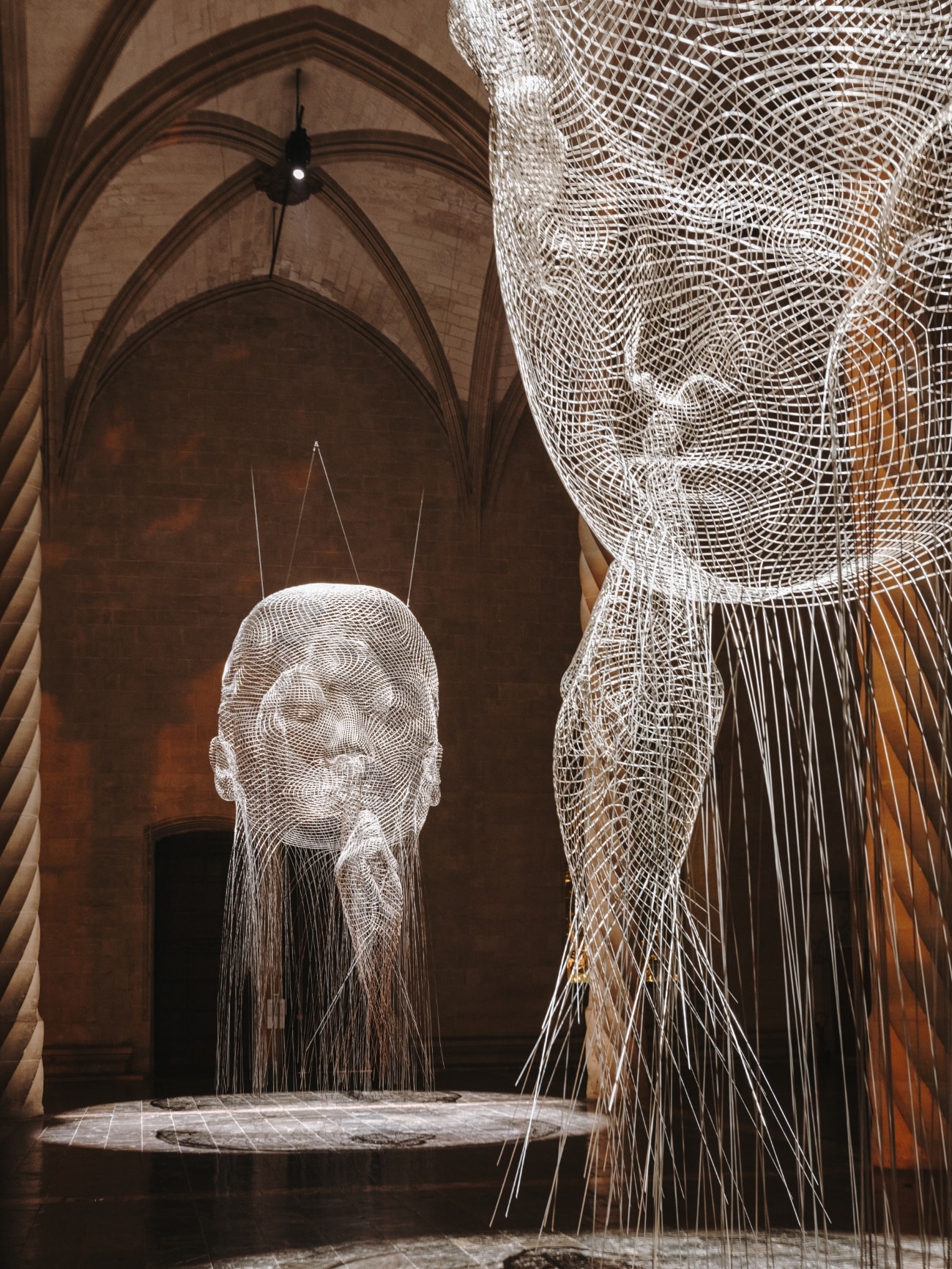
The exhibition is on view until February 15, 2025.
